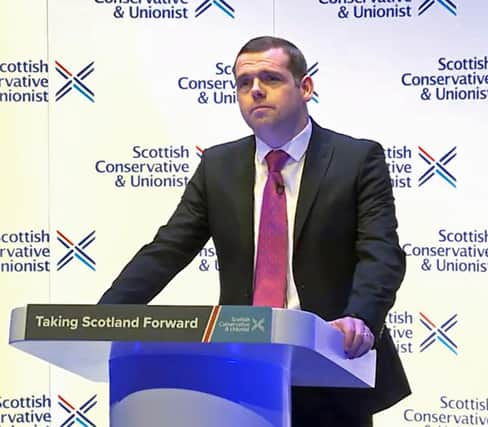Analysis: Why are the Scottish Tories failing to make inroads into SNP dominance?


In addition, the party made the very deliberate choice to bring back Ruth Davidson to the forefront of their Holyrood presence.
The logic being that, if the former leader could do it ahead of the 2016 election, she could help minimise potential losses at 2021.
Advertisement
Hide AdAdvertisement
Hide AdIn reality, the party is failing to convince voters to back it on domestic issues.
According to the latest Scotsman/SavantaComRes poll, the party will lose 14 seats at the 2021 Holyrood election and have polled their worst list voting intention figures since prior to the 2016 election.
Given the SNP’s runaway lead in the constituency polls – they are likely to win all but a handful of the first past the post seats – the way to a strong second place for the Tories is through the list vote.
While voters moving from the SNP to the Conservatives is unlikely, those considering a switch from Labour are the Tories’ real prize.
After all, a divided unionist movement across three parties will always struggle to tackle the nationalist dominance of the SNP in a country split 50/50 on the issue of independence.
But it is clear the party has work to do in order to convince unionist voters they are the best choice.
Looking at voting intention, significantly more Labour (37 per cent) voters in 2019 have said they are more likely to vote for the SNP in May rather than the Scottish Conservatives when considering how the parties have handled the pandemic.
The equivalent figures for Labour voters more likely to vote for the Scottish Tories are just 17 per cent.
Advertisement
Hide AdAdvertisement
Hide AdThis has a knock-on effect to the Holyrood voting intention, with 20 per cent of Labour and Liberal Democrat voters considered likely to vote and weighted on turnout saying they will switch to voting for the SNP in the constituency vote.
Regional list voting intention underlines this challenge.
Just three per cent of voters considered likely to vote and weighted on turnout have switched from Labour to the Scottish Tories, with 11 per cent from the Liberal Democrats.
Critically, more Conservative voters in 2019 (nine per cent) have said they would vote SNP on the list vote than Labour voters switching to the Conservatives.
This data should come with caveats – this is the lowest regional polling since prior to the 2016 elections in which they went on to win 23 per cent of the vote for Douglas Ross' party.
But more worryingly for Mr Ross is that the SNP are proving a stronger draw for Labour voters disaffected with their own party.
On healthcare and education – two critical domestic issues – the SNP is trusted more than the Scottish Conservatives by a net of 15 per cent of 2019 Labour voters.
On the economy, that figure is 18 per cent.
In fact, on education and health care, 10 and 15 per cent of 2019 Conservative voters trust the SNP more than their own party.
That must change if Holyrood 2021 is to be anything other than a bitter disappointment for the Scottish Conservatives and Douglas Ross.
A message from the Editor:
Thank you for reading this article. We're more reliant on your support than ever as the shift in consumer habits brought about by coronavirus impacts our advertisers.
If you haven't already, please consider supporting our trusted, fact-checked journalism by taking out a digital subscription.
Comments
Want to join the conversation? Please or to comment on this article.